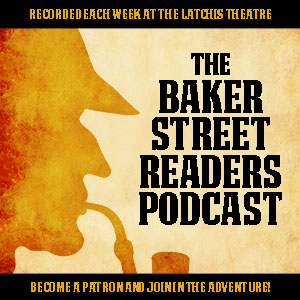I was noticing how different various classic Christmas tales would be if the ending was chopped off. The carefully crafted endings to the favorite tales are crucial to us enjoying the story and coming back to it year after year.
The ending is typically where the lesson is learned, growth occurs, good overcomes evil, and so on. Not if you lob off the ending, though.
Here are some examples:
• The Nutcracker – Drosselmeyer arrives and hands out presents to the young children. he gets to Clara and says “You’re getting a bit old for Christmas, aren’t you. You’ll get a present with the adults later.” And, curtain.
• It’s a Wonderful Life – George Bailey reaches the bridge is desperation and jumps off. Roll credits.
• A Christmas Story – Dogs eat the family dinner. Fade out.
• The Grinch – steals all the toys and decorations. The End.
I’m sure you can think of others. Put the ending at a different point and the entire story changes.
There must be a lesson in this beyond the obvious creative writing implications, but it is a bit early for me to tease it out. Instead, it’s mostly just an exercise in fun and silliness.
Endings can’t be changed, can they?
…
Happy Solstice!








• It's a Wonderful Life - George Bailey reaches the bridge
” It’s a Wonderful Life – George Bailey reaches the bridge in desperation and jumps off. Roll credits.”
I think that would be your run of the mill art film, trying to pass it self off as realism. I think Von Trier would buy the rights to this screenplay, and ,might rename the movie, “It’s a brutal and impossible life, so, jump”
Not a Christmas movie but . . .
I saw the movie, “Red Light” with Rober DeNiro. It was excellent, up to a point.
If you haven’t seen the film, here is the trailer.
https://www.youtube.com/watch?v=vatOw6FquzU
Also, if you haven’t seen the film, I can highly recommend it, but only if you stop it right after the death and funeral scene. It was a startling, mysterious and well acted film until that point, with depth and powerful questions.
Then it went to movie purgatory, and from there to hell. It switched from being a film of real promise, to being a painfully bad, hackneyed thriller. I enjoy a good thriller, but this was just lame, lame, lame, for the entire second half.
The story ends ‘here.'
As a fellow writer told me, the story ends ‘here.’ Or, more to the point, the original author’s ‘the end.’ No point in usurping the storyline with a new ending…, except as “mostly just an exercise in fun and silliness” with a smidgen of creativity.
Brazil
Reminds me of the film (set at Christmas-time, no less) by Terry Gilliam, Brazil, and the studio attempting to re-edit it to be a “happy” ending.
Here’s another destruction of a good story for you:
• Charlie Brown Christmas – they tell him he bought a terrible tree and he is a blockhead. End credits.
The Journey, not the Destination
It’s not only endings that reveal or conceal. Also the nooks and crannies, the coves, and contours seen up-close tweak our understandings. Events that might be overlooked when surveying the map of a story hold a lot of material, also worthy of wonder and consideration.
—
A Jewish woman give birth to a boy. She’s humble of nature and unassuming of station. She’s also unforthcoming about the fatherhood of the child. She offers a story of Divine impregnation. Ok Whatever. Her husband goes along, doesn’t like to make waves. Or, maybe it’s not that she’s dissembling, just that the story is a little bit on the unusual side, so better keep things on the down low.
In any case, people talk. The years go by. Her husband hangs in, and remains steadfast in his duties as a father to the boy.
The child navigates the acquisition of language, learns the terrain of his village. He absorbs the codes of human interaction. The boy grows through his toddlerhood, into his apprenticeship in the family business, the construction trades. He obtains and sharpens the skills of his craft.
When the day comes to assert his manhood, this mature and poised adolescent performs the bar mitzvah ceremony, surrounded by friends and family.
It was a nice day. All seems wonderful for the little family, the future bright indeed.
Funny how this works
The future looks bright indeed, unless you know the whole story, in which case the simple adjective “bright” doesn’t quite cover it. But this is a great example of how the story changes depending on where you drop the curtain. At age 16, Jesus might have seemed like a shoe-in for a happy and prosperous life. Or he might have seemed otherwise, maybe too precocious, a tad too outspoken. What did Mary think? Did she ever say “Shush, the Romans will hear you”? Did she worry about the Pharisees? I’ll bet she did.
Right now, I’m trying to figure out if crafting a happy ending is really honest. Or is it trying to manipulate us — in the case of Wonderful Life, to hang on, in Christmas Carol, to be more empathetic and generous. But the Jesus story, which purports to be history, and who’s to say it isn’t, is harder to interpret. It doesn’t have your typical happy ending, in that first he has to be crucified, which people tend to remember, and only then and after three days, did he ascend into Heaven to sit at the right hand of the Father. If you let the story stand, just as it’s presented multiple times in the New Testament, Jesus’ story is still a bit of a cypher. For me, it has always cautioned that if you’re very very good and you try to influence others to be that way too, the powers that be will get you. That would be the earthly powers that be, not God, obviously.
As a person raised in Christianity, I do love the story of the nativity, which is beautiful and promising (angels, wise men, shepherds abiding with their flocks). There’s a poetry to it that really works for me, for whatever reason.